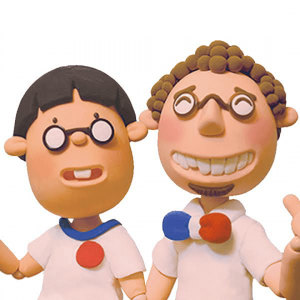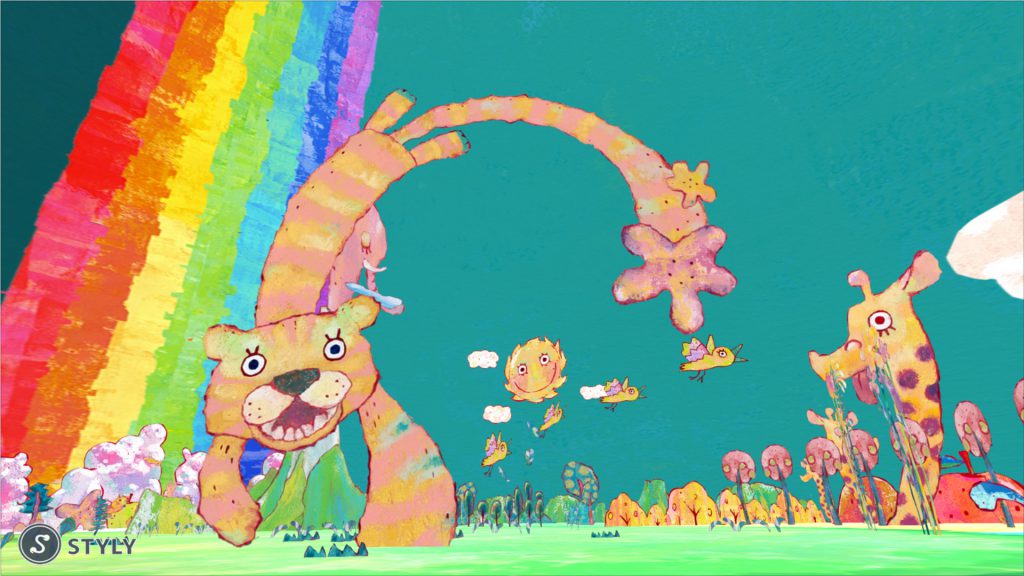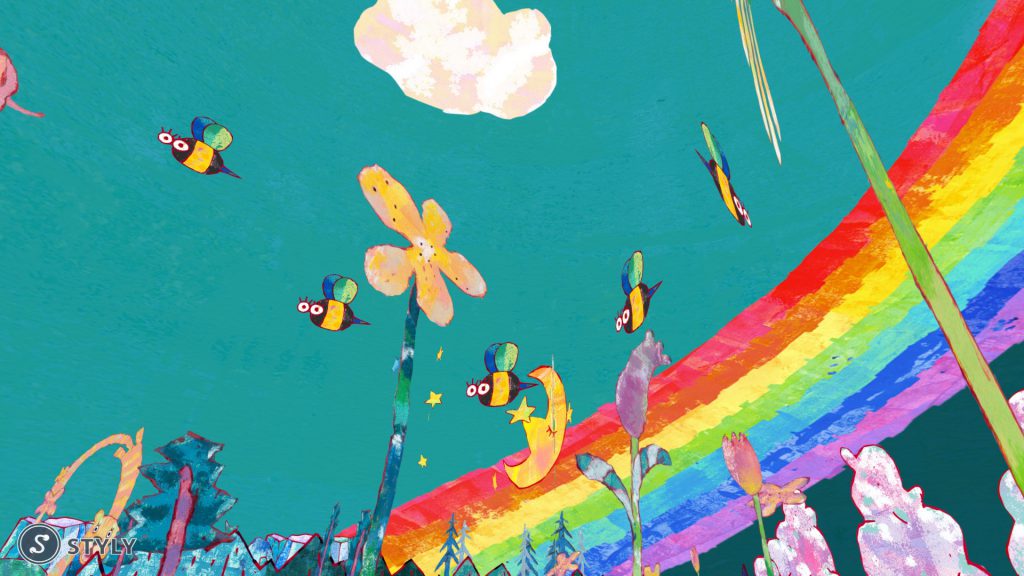NEWVIEW AWARS 2018は「超体験をデザインせよ」をタグラインに、音のインスタレーションや美術展、MVなど多彩なジャンルの作品応募があった。
その中でも面白いアプローチをしていたのが”絵本の世界”を再現したpaper islandだ。
本作はクレヨンで描かれた絵を切り絵のように分解し、空間に配置する事で作られた。実は2D素材のみで作られた空間だ。
VRと言えば3D素材を使うものというイメージがあるかもしれないが、2D素材だけでも十分世界観を作ることができると本作が証明している。
今後、より多くのアーティストがVR制作に携われるよう本作の制作ノウハウを共有したいと思い、作者であるアートユニット machutorica氏にどのような手順で制作されたのか、お伺いしてきた。
プロフィール

machutorica( HP:http://www.rica.cc )
アートユニット|日本
作品名:paper island
はやかわりか:フリーランスのCGデザイナーでコマ撮り作家。デジタルとアナログを行き来しながら制作してます。
マチュー:ITエンジニア。色々な事に興味津々、ハックも遊びも大好きなフランス人です。
絵本の物語を体験する
— まず初めにNEWVIEW AWARDS 2018を知ったキッカケを教えてくれますか?
machutorica:VR関係のワークショップを探していたところ、MATERIAL
— 応募しようと思ったのはなぜですか?
machutorica:VRで作品を作ってみたかったのですが、なかなか手が出ず、STYLYだと簡単にVR空間を作れると知り、どうせ何か作るな
6-paper island from STYLY on Vimeo.
— ありがとうございます。今回、制作された「paper island」はどのようなコンセプトで作られましたか?
machutorica:「絵本の中に入って、物語を体験する」をテーマに制作しました。
— VR制作は始めてとの事ですが、どのぐらいの期間で制作されたのでしょうか?
machutorica:制作期間は約3週間程度です。
— 経験者の方でも1ヵ月程度かかっているので、かなり早いですね。具体的にはどのような手順で進められたのでしょうか?
machutorica:元々、計画していたアニメーション作品をVRにしてみようという
それをpngファイルにし、Unityで取り込み、Unityか
元々あった素材では足りなかったので、足りない部分はペンタブで
制作ツール一覧:
- 画用紙、アクリル絵の具、クレヨン
- Photoshop
- CLIP STUDIO
- Unity

デジタル感を出さない
— なるほど。最もこだわったポイントは何ですか?
machutorica:絵本の中にいるような空間にしたかったので、デジタル感を「出さ
他にもある場所に行くと、音が変わるようにしたかったので、Unityで取り込んだ絵をPrefabにし、Prefabにサ
— 初制作だったと思うので、苦労した事も多かったのではないですか?
machutorica:そもそもUnityが初めてだったので使い方、音量の
あと、Unity上ではその場所に行くと、草が立ち上がるなど
手持ちの環境では実際に確認できなかったので、スペックの高いPCの購入とOculus Riftを購入という、なかなかの出費がありました!

— ありがとうございます。最後に今後の展開をお教えください。
machutorica:まずは、paper islandをストーリーをつけて完成させたいです。
その後は、どんな素材を使うかわかりませんが、VRで体験できる
2D素材を使った作品は他にもアニメーション作家 ぬQ氏が手掛けたお菓子の国がテーマの「SWEETS_EMPIRE」や、石田真澄氏のVR写真展「world of reflection」など、様々なアプローチのVR作品がある。
STYLYの望みはVRの敷居を下げ、全てのアーティストがVR制作に携わる事だ。
今回の記事を参考にまだ試した事がないアーティストが制作に着手してくれることを願っている。